From April 17 to 20, Thales Alenia Space will attend the 38th Space Symposium event in Colorado Springs, Colorado, in the United States, to showcase its latest solutions in the fields of Earth observation and space exploration, including science and orbital infrastructures.
Space to Explore : Back to the Moon to stay

© Space Foundation
More than 50 years after the last mission of the Apollo program, the Moon is back, more meaningful than ever. Last year, ARTEMIS I mission was a tremendous success. The image of the Earth captured by Orion capsule made us feel that our planet was both precious and fragile. The unmanned mission served to validate the proper functioning of the spacecraft. This mission prefigures Artemis II, scheduled for launch in 2024, with real astronauts on board. Artemis II will orbit the moon but will not land. It will be necessary to wait until 2025, with Artemis III, so that the Humanity can again walk on the Moon. Thales Alenia Space engineers are proud to be onboard Orion’s capsule. After providing a major part of the ISS’ habitable volume, we were selected to build 3 pressurized modules for future Gateway cislunar space station.
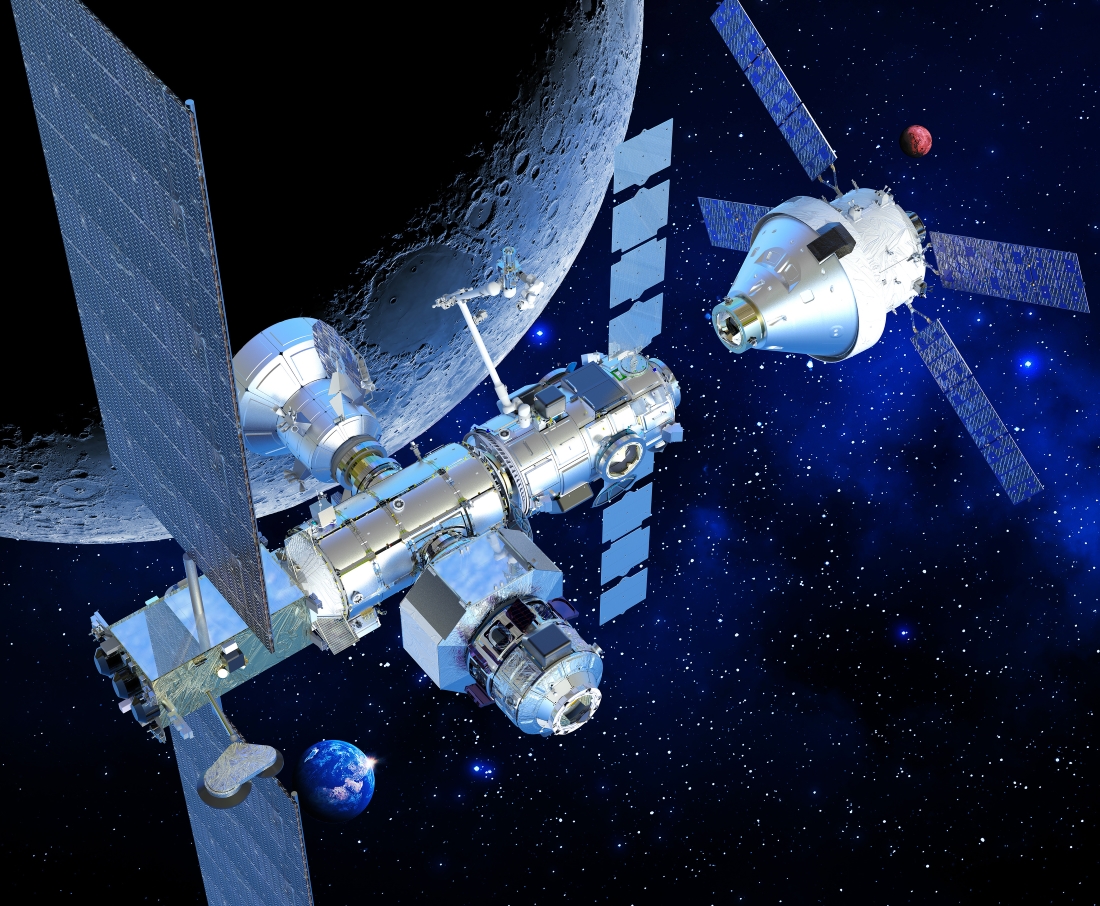
Lunar Gateway & Orion © Thales Alenia Space
Our company will provide as well the first 2 modules of the world's first commercial space station, Axiom. We also provide all pressurized cargo modules dedicated to Cygnus resupply vessels, whose mission is to deliver twice a year several tons of food, supplies, water, fuel, repairs and science experiments to astronauts onboard the International Space Station.
Our teams are also working on the design of lunar shelters. Based on domotic architecture, these habitats will ensure the availability of vital resources (water, power,…) stored or generated on the Moon’s surface. These new infrastructures are intended to offer the crew the possibility of working in complete safety and living in a comfortable lunar environment. This is part of a larger feasibility study contract on behalf of the Italian Space Agency (ASI) to design concepts to support a human presence on the Moon, within the scope of NASA’s Artemis program.
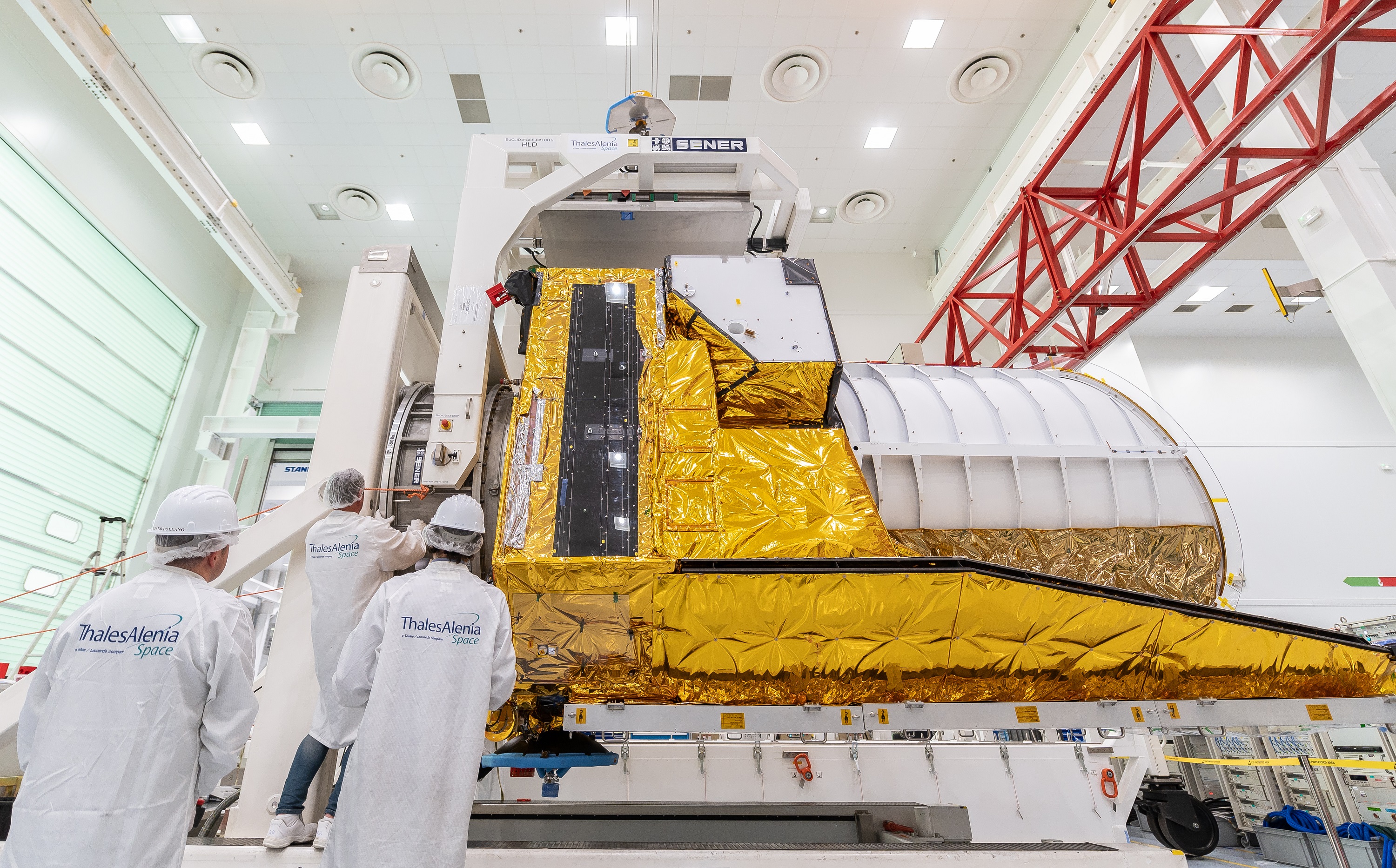
Euclid © Thales Alenia Space
Thales Alenia Space has also contributed to numerous iconic space exploration missions across the solar system, including Cassini-Huygens (Saturn), BepiColombo (Mercury), ExoMars (Mars), Euclid (study of the universe’s dark matter and dark energy) to name a few. By examining billions of galaxies up to 10 billion light-years away, and covering more than a third of the sky, Euclid is set to unlock a wealth of knowledge that will shape our understanding of the cosmos. Scheduled for launch in July, the satellite is up to leave the port of Savona, in Italy, to reach Port Canaveral. We are looking forward to the launch of Euclid with stars in our eyes!
Space to Observe & protect: benevolent eyes in sky safeguarding our planet

Copernicus © Thales Alenia Space
How could we live in a world without Earth observation systems? For several decades now, Earth observation satellites—whether for oceanography, weather forecasting or environmental monitoring—are vitally important for citizens everywhere. The data they provide to the scientific community is delivering deeper insights into the climate mechanisms that govern our planet.
Copernicus is the most ambitious environmental monitoring program in the world, with 12 families of “Sentinel” satellites surveying Earth, its topography, seas, lakes, oceans, and polar regions. It also encompasses climatology missions and programs measuring human-induced CO2 emissions or affording new applications to foster sustainable agriculture and biodiversity. A program of this scale is a key to Europe’s ability to better anticipate the consequences of global warming so that we can safeguard our planet. The satellites and ground segments are built by European prime contractors for the European Space Agency (ESA). Thales Alenia Space is a major contributor to 11 of the 12 missions in the European Commission’s program, Copernicus.
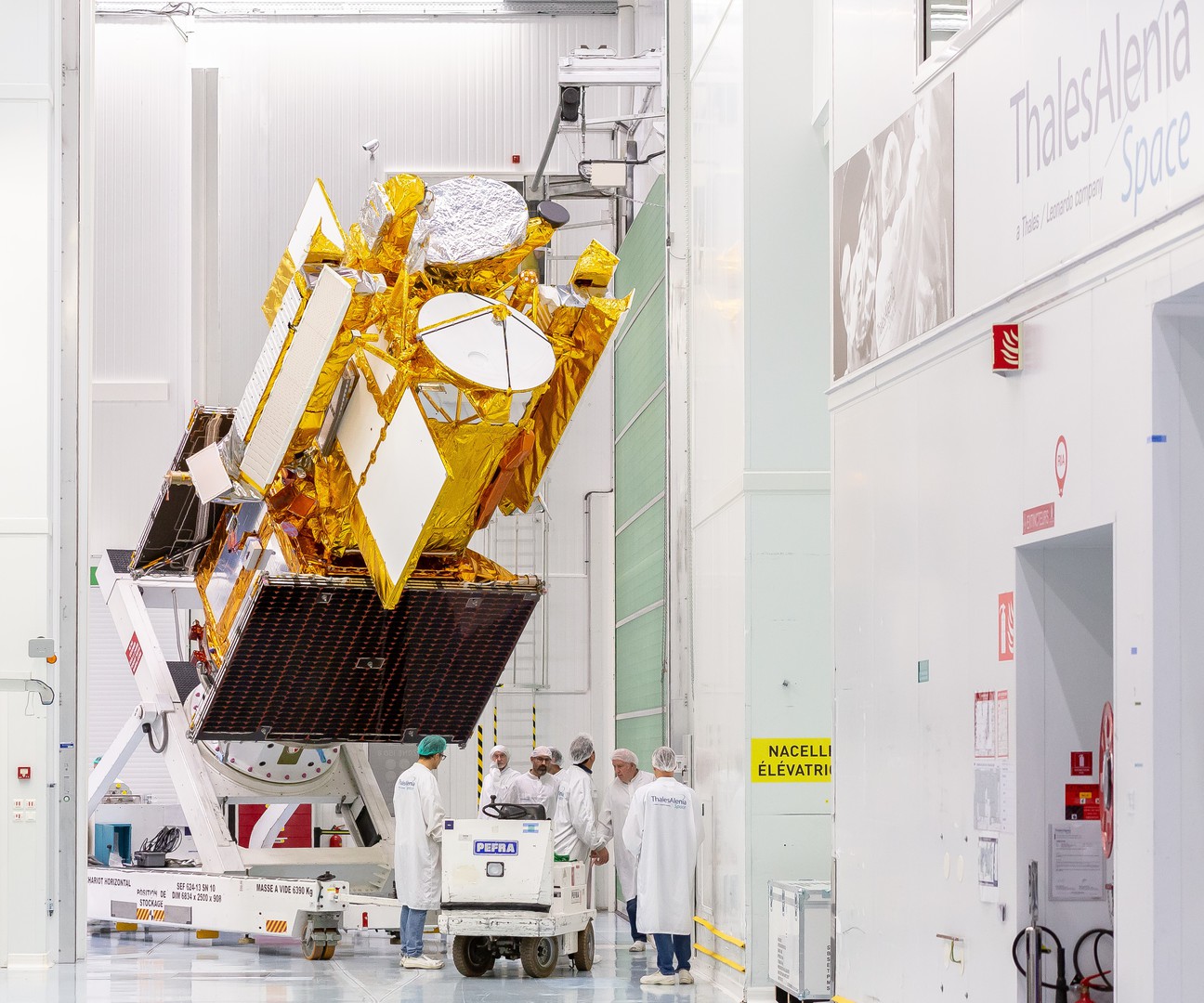
SWOT © Thales Alenia Space/Imag[IN]
Thales Alenia Space is also a world leader in altimetry. Our radar altimeters are flying on world-renowned oceanography satellites, the latest being SWOT. A joint mission between CNES and NASA, this satellite, mostly built by Thales Alenia Space in cooperation with the Jet Propulsion Laboratory, is set to revolutionize oceanography and continental hydrology. Successfully launched in December 2022, SWOT features a controlled atmospheric reentry subsystem, which means no debris will be created when it reaches end-of-life.
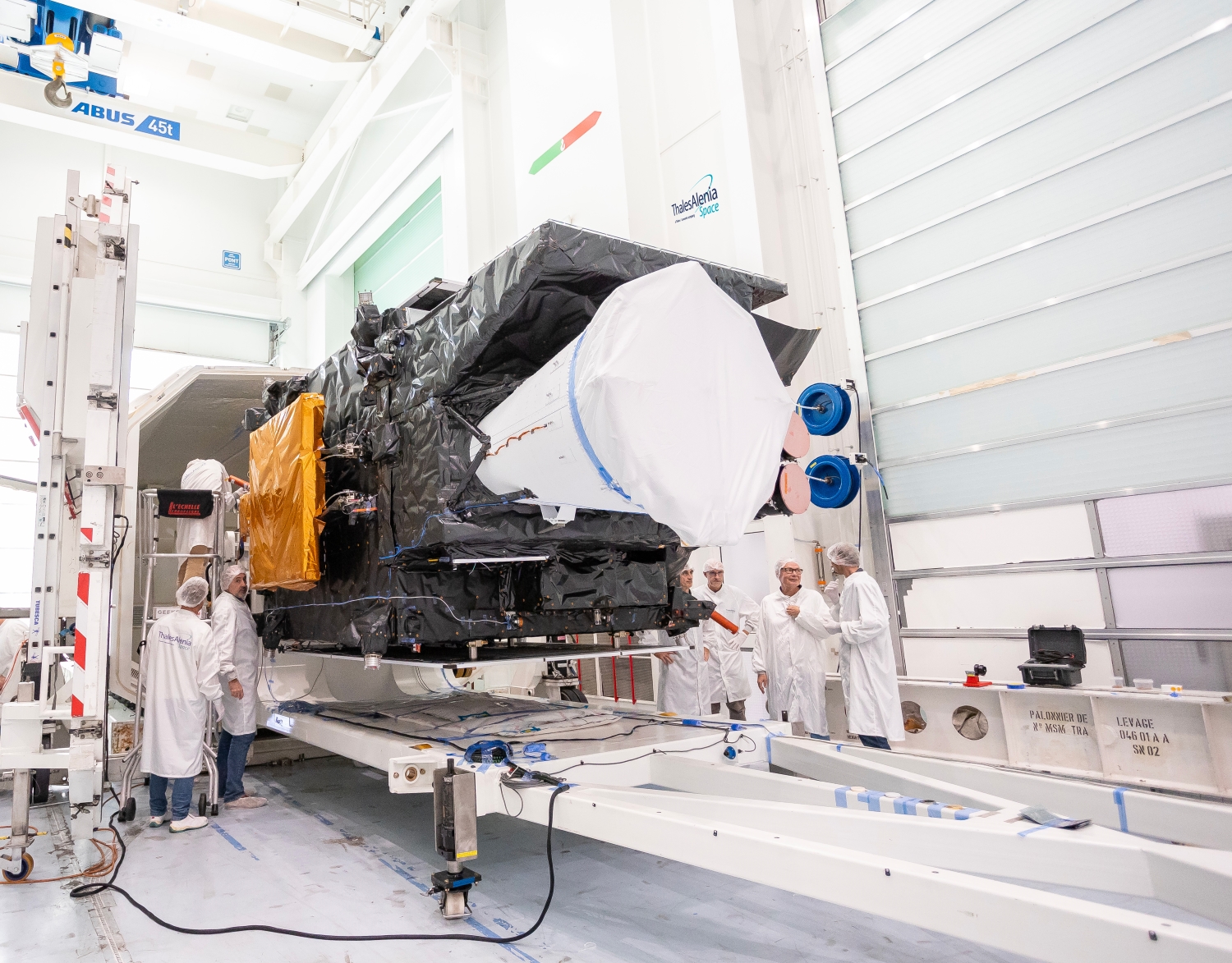
First MTG imaging satellite © Thales Alenia Space/Imag[IN]
Thales Alenia Space has always been in the vanguard of geostationary weather satellites in Europe, being the prime contractor for 3 generations of Meteosat satellites, all dedicated to meteorology. Our teams are now working on Meteosat Third Generation, MTG, that will include 4 imaging and 2 sounding satellites. The imagers will have lightning detectors and the sounding instruments will have the ability to map the atmosphere in 3D. Once the 6 MTG satellites are in orbit, Eumetsat will be getting the world’s most sophisticated weather forecasting services. The first MTG imaging satellite was successfully launched by Arianespace in December 2022.
Space to Secure and Defend
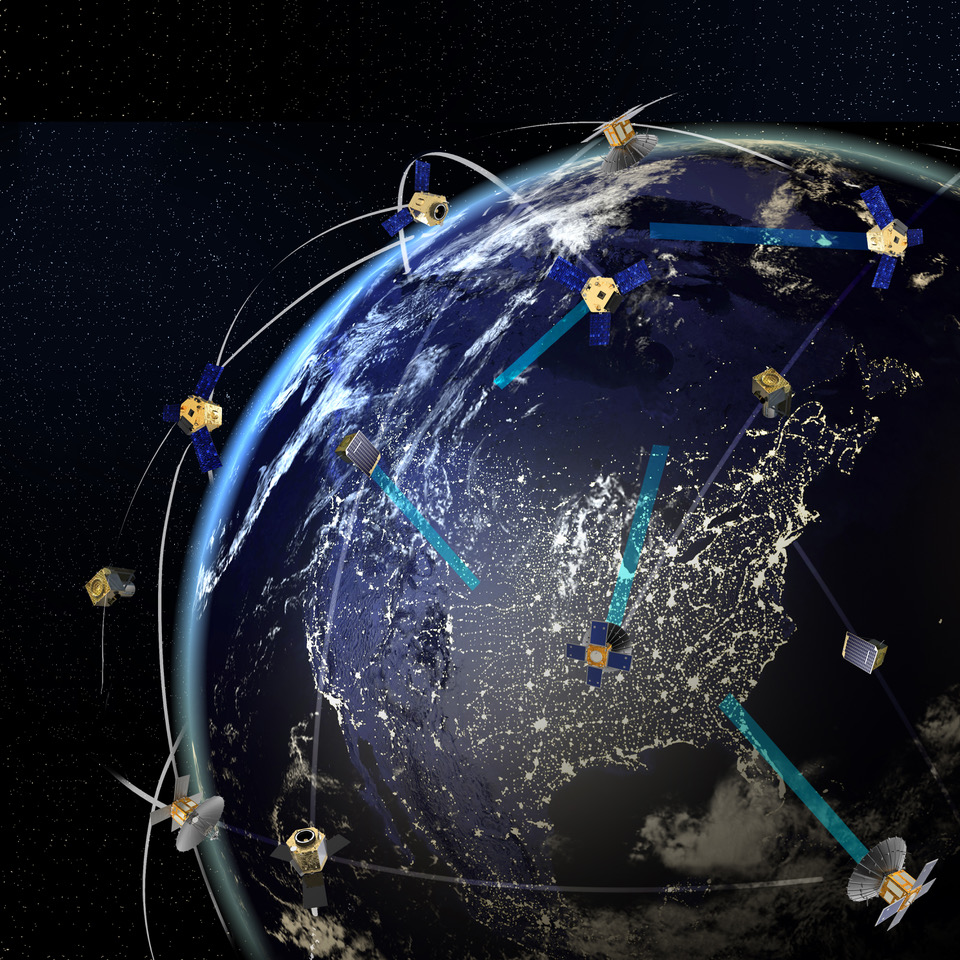
© Thales Alenia Space
Defense or dual observation systems guarantee national sovereignty and security by generating invaluable data for border and maritime surveillance, intelligence, mapping and other critical functions. Dual observation systems are also highly useful during natural disasters, providing decision-makers with the vital information needed to quickly identify damaged areas and alert search & rescue organizations.
Thales Alenia Space has unrivaled expertise in very-high-performance observation systems calling on both optical and radar sensors. To name a few, we built two generations of COSMO-SkyMed radar satellites for the Italian space agency and defense ministry and we were chosen by South Korea to build four synthetic aperture radar (SAR) observation satellites. Through the LeoStella joint venture in the United States, we are also contributing to the BlackSky constellation, which will include dozens of optical observation satellites featuring submetric resolution and very high revisit rates. Thales Alenia Space has built on its longstanding legacy in high and very-high resolution optics to offer extremely competitive and high-performance Smart Telescope solutions. These telescopes are perfectly suited to the emerging market of spaceborne optical observation constellations featuring high revisit rates.
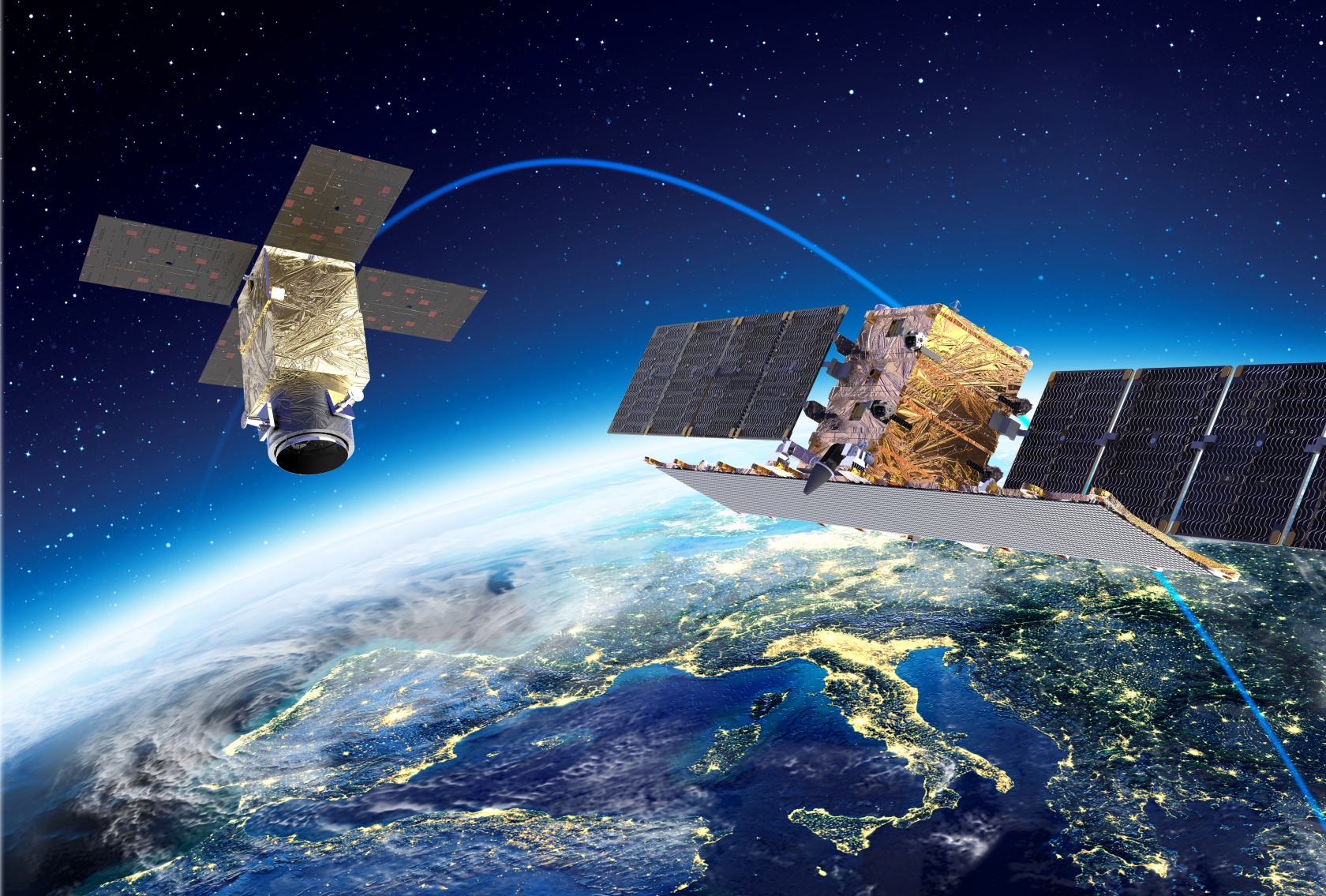
IRIDE © Thales Alenia Space
At Colorado Springs, our experts will also focus on our radar-based solutions. 2 weeks ago, Thales Alenia Space was awarded contracts from ESA to supply a first batch of six small satellites with synthetic aperture radars and one satellite based on optical technology for the Italian Earth observation constellation, IRIDE.


